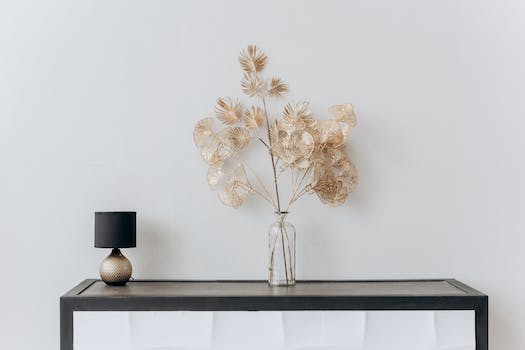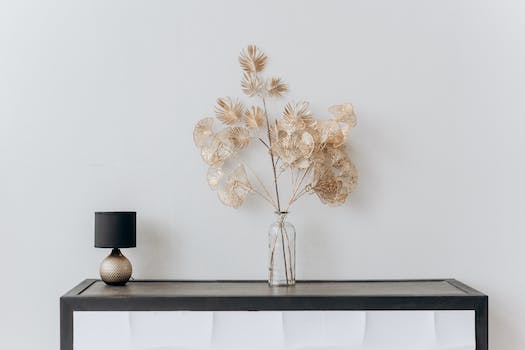Painting furniture can be a great way to give your home a fresh look without breaking the bank. However, achieving a professional-looking finish can be easier said than done. In this article, we’ll share 10 tips for painting furniture that will help you achieve a flawless finish that looks like it was done by a pro. Whether you’re a seasoned DIYer or a beginner, these tips will help you get the most out of your furniture painting project.
- 1. Paint Selection
- 1.1. Choosing the Right Type of Paint
- 1.2. Picking the Right Color
- 1.3. Testing the Paint
- 1.4. Priming the Surface
- 1.5. Applying Thin Coats
- 2. Preparation
- 2.1. Cleaning the Furniture
- 2.2. Sanding the Surface
- 2.3. Filling Holes and Cracks
- 2.4. Removing Old Paint
- 2.5. Taping Off Areas
- 3. Painting Techniques
- 3.1. Using a Brush
- 3.2. Using a Roller
- 3.3. Spray Painting
- 3.4. Avoiding Drips and Streaks
- 3.5. Allowing Proper Drying Time
1. Paint Selection
When selecting paint for your furniture project, it’s important to consider the type of material you’ll be painting on and the desired finish. For a smooth and professional look, opt for a high-quality, water-based paint in a finish that suits your style, such as matte, satin, or gloss. It’s also important to choose the right color for your space and to test the paint on a small area before committing to a larger project. Keep in mind that multiple coats may be necessary for full coverage and a flawless finish.
1.1. Choosing the Right Type of Paint
Choosing the right type of paint is crucial when it comes to painting furniture. There are different types of paint available in the market, and each type has its own unique features. It is important to choose the right type of paint to ensure that the furniture looks great and lasts for a long time.
1.2. Picking the Right Color
When it comes to painting furniture, choosing the right color is crucial. The color you select can completely transform the look and feel of a piece of furniture. Before you start painting, consider the style of the furniture and the overall aesthetic you are trying to achieve. Do you want a bold, statement piece or something more subtle and classic? Once you have a clear idea of what you want, start exploring color options and consider factors such as the room it will be placed in and the other colors in the space. Remember, the right color can make all the difference!
1.3. Testing the Paint
Testing the paint is an important step in the furniture painting process. Before applying the paint to the entire piece, it’s recommended to test it on a small, inconspicuous area first. This will allow you to see how the paint looks on the surface and make any necessary adjustments before committing to the entire piece. Additionally, testing the paint can help you determine if you need to apply a primer or multiple coats of paint for optimal coverage and durability.
1.4. Priming the Surface
Before painting your furniture, it is important to prepare the surface properly. This includes cleaning and sanding the surface to ensure that the paint adheres properly. Use a mild soap and water to clean the surface and let it dry completely before sanding. Sand the surface with a fine-grit sandpaper until it is smooth to the touch. Once the surface is primed, you can move on to selecting the right paint for your project.
1.5. Applying Thin Coats
Applying thin coats of paint is crucial for achieving a professional look when painting furniture. Thick coats of paint can result in an uneven finish, drips, and a longer drying time. To apply thin coats of paint, use a high-quality brush or a spray gun. Begin by lightly sanding the surface of the furniture and wiping it clean. Then, apply a thin coat of paint, making sure to smooth out any drips or brush strokes. Allow the first coat to dry completely before applying additional thin coats until the desired finish is achieved.
2. Preparation
Before you start painting your furniture, you need to prepare it properly. This means cleaning it thoroughly with a mild detergent and water to remove any dirt, dust, or grime. Next, sand the surface to remove any existing finish and create a rough texture for the primer to adhere to. Fill any cracks or holes with wood filler and sand again until the surface is smooth. Finally, wipe down the surface with a tack cloth to remove any remaining dust or debris.
2.1. Cleaning the Furniture
Before painting furniture, it’s important to ensure that it’s properly cleaned. Use a mixture of warm water and mild soap to clean the surface of the furniture. For tough stains, try using a mixture of water and vinegar. Once the furniture is clean, allow it to dry completely before painting.
2.2. Sanding the Surface
Before painting furniture, it’s important to sand the surface to create a smooth and even base. Start with a coarse grit sandpaper (around 80-grit) to remove any existing paint or finish. Then move on to a finer grit (around 120-grit) to smooth out the surface. Be sure to sand in the direction of the grain to prevent any scratches or marks. After sanding, wipe down the surface with a damp cloth to remove any dust and debris.
2.3. Filling Holes and Cracks
Before painting your furniture, it’s important to fill in any holes or cracks with wood filler. This will ensure a smooth surface and a professional-looking finish. Use a putty knife to apply the filler, then sand it down once it’s dry. If the holes or cracks are particularly deep, you may need to apply multiple layers of filler, allowing each layer to dry completely before adding the next. Once the surface is smooth and even, you’re ready to move on to the next step in the painting process.
2.4. Removing Old Paint
Before you can start painting your furniture, you need to remove any old paint or finish. This is an important step to ensure that your new paint adheres properly and looks smooth and even. There are several ways to remove old paint, including sanding, using a paint stripper, or using a heat gun. Whichever method you choose, be sure to wear protective gear and work in a well-ventilated area. Once the old paint is removed, sand the surface of the furniture to create a smooth and even surface for your new paint to adhere to.
2.5. Taping Off Areas
Before painting furniture, it is important to prepare the area where you will be working. One way to do this is by taping off any areas that you do not want to be painted. This can include knobs, legs, or any other decorative elements that you want to preserve. Use painter’s tape to cover these areas, making sure that it is firmly in place and that no paint can seep through. This will ensure that your finished product looks professional and clean.
3. Painting Techniques
When it comes to painting furniture, there are a few techniques that can help you achieve a professional look. First, always clean and prep the surface before painting. This includes sanding any rough spots and filling in any holes or cracks with wood filler. Second, use a high-quality primer to help the paint adhere to the surface and prevent any bleeding or discoloration. Third, consider using a paint sprayer for a smooth and even finish. If you’re using a brush, make sure to use thin coats and lightly sand between each coat. Fourth, don’t forget to seal the paint with a protective finish, such as wax or polyurethane. And finally, take your time and be patient – rushing the process can result in mistakes and a less professional-looking final product.
3.1. Using a Brush
Using a brush is a great way to achieve a professional look when painting furniture. Here are some tips to keep in mind: Use a high-quality brush with natural bristles, as synthetic bristles can leave streaks. Dip the brush into the paint, then tap off the excess on the side of the can. Use long, even strokes, working in the direction of the grain. Don’t overload the brush with paint, as this can cause drips and uneven coverage. Finally, be sure to clean your brush thoroughly after each use to keep it in good condition.
3.2. Using a Roller
Using a roller can be a great painting technique for furniture. It applies paint quickly and evenly, and can create a smooth finish. When using a roller, it’s important to choose the right size for the job. A larger roller is best for larger surfaces, while a smaller roller is ideal for smaller details. Additionally, be sure to use a high-quality roller cover and paint that is appropriate for the surface you’re painting. Roll the paint on in a thin, even layer, and avoid going over the same spot multiple times to prevent streaking. Overall, using a roller is a simple and effective way to achieve a professional-looking finish on your painted furniture.
3.3. Spray Painting
Spray painting is a great technique to achieve a smooth and even finish on furniture. It’s important to choose the right spray paint for your project and to properly prepare the surface by sanding and cleaning it. When spraying, hold the can about 8-10 inches away from the surface and apply thin, even coats. Allow each coat to dry before applying another. Always spray in a well-ventilated area and wear a mask to protect yourself from fumes.
3.4. Avoiding Drips and Streaks
One of the most important aspects of painting furniture is ensuring that the finish is smooth and even. Drips and streaks are a common problem that can make your furniture look unprofessional. To avoid drips, make sure that you don’t overload your brush or roller with paint. Instead, use a light touch and apply several thin coats, allowing each coat to dry completely before applying the next one. To avoid streaks, use long, even strokes and work in the direction of the grain. If you do notice drips or streaks, don’t panic! Simply sand them down lightly with fine-grit sandpaper and touch up the area with a small brush.
3.5. Allowing Proper Drying Time
Allowing proper drying time is essential when painting furniture. Rushing the process can result in a less professional look and can also cause the paint to peel or chip. It is recommended to wait at least 24 hours before applying a second coat of paint or any finishing touches to ensure the paint has fully dried. Be sure to also consider the temperature and humidity of the environment, as this can affect drying time.
Conclusion
By following these 10 painting furniture tips, you can achieve a professional look and transform your furniture into something beautiful and new. With a little patience and attention to detail, anyone can become a skilled furniture painter.






These 10 innovative and imaginative DIY home decor ideas from [object Object] provide a refreshing approach to enhancing ones living…